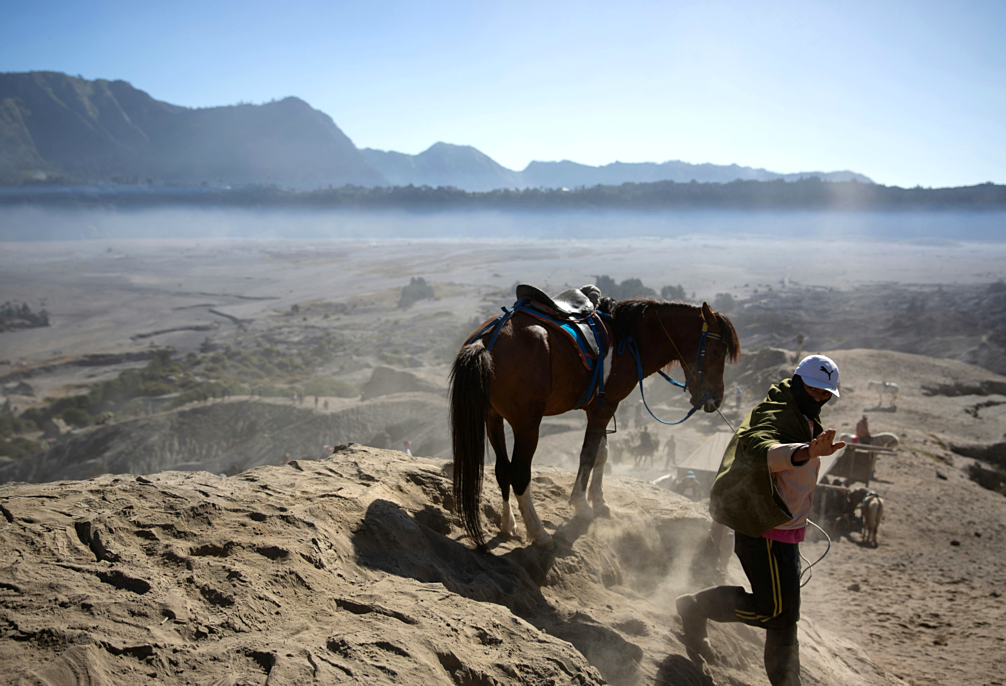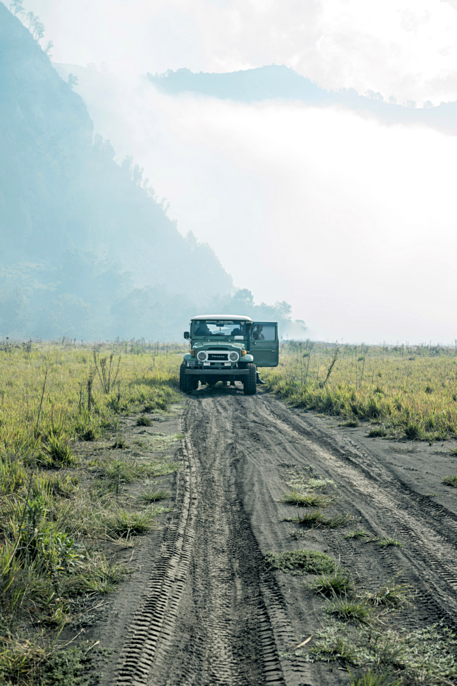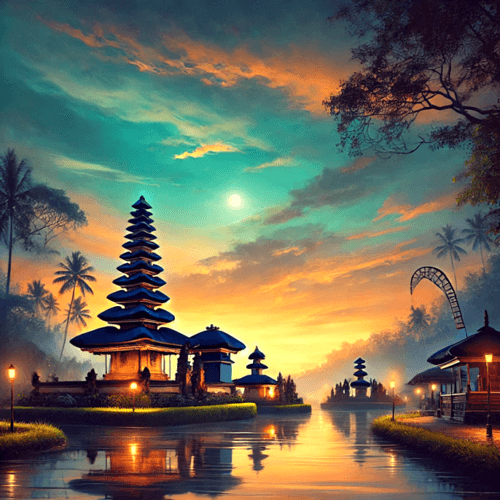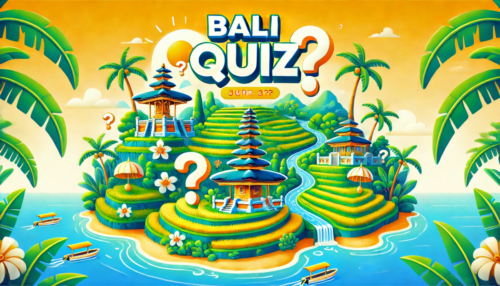Java’s Iconic Volcano
Mount Bromo, located in East Java, is one of Indonesia’s most famous volcanoes and a must-visit destination for travelers seeking both natural beauty and adventure. Part of the Bromo Tengger Semeru National Park, it offers an otherworldly landscape complete with a smoking crater, vast sand plains, and stunning sunrises. Its unique environment, combined with cultural significance, makes Mount Bromo a spectacular experience for any visitor to Java.
The Landscape of Mount Bromo
Mount Bromo is relatively small compared to other volcanoes in Indonesia, standing at 2,329 meters (7,641 feet), but its location in the Tengger Caldera makes it stand out. The massive caldera, with a diameter of about 10 kilometers, holds the Sea of Sand, a barren and arid expanse of volcanic ash that surrounds Bromo, adding to its mystical appeal. The constant smoke billowing from Bromo’s crater is a reminder of its active status.
Just behind Bromo, you’ll see Mount Semeru, Java’s highest peak at 3,676 meters. This towering giant is also active, with periodic eruptions that further enhance the dramatic landscape. The volcanic activity and rugged beauty of the area make Bromo a popular destination for photographers and adventurers alike.
Best Time to Visit Mount Bromo
The best time to visit Mount Bromo is during the dry season, which runs from May to September. During this time, the weather is clear, making it ideal for trekking and sunrise tours. In contrast, the wet season (October to April) can bring heavy rains that might hinder visibility and make the trails slippery.
One of the highlights of a trip to Mount Bromo is witnessing the sunrise from Mount Penanjakan, a nearby viewpoint. Tourists often begin their journey at 3 or 4 a.m. to reach the peak before the sun rises. Watching the sky transition from darkness to light, illuminating the smoking craters and sand plains, is an unforgettable experience.
How to Get to Mount Bromo
Most visitors start their journey to Mount Bromo from the towns of Probolinggo or Malang, both accessible by bus or train from major cities like Surabaya. From these towns, you can hire a private car or join a tour to the village of Cemoro Lawang, which is the gateway to Bromo. Cemoro Lawang is just a few kilometers from the Sea of Sand and offers basic accommodations for travelers.
Once in Cemoro Lawang, there are two main options for exploring Bromo:
- Jeep Tours: The most common way to explore Bromo is by hiring a jeep that takes you across the Sea of Sand and up to the foot of the volcano. Jeep tours also usually include a visit to the Penanjakan viewpoint for sunrise.
- Hiking: For those seeking a more active experience, you can hike from Cemoro Lawang to the crater. The hike takes about 45 minutes to an hour, depending on your pace, and involves climbing a set of stairs to reach the rim of the crater.
Hiking and Climbing Mount Bromo
While Mount Bromo is an active volcano, it is relatively safe for visitors, and the hike to the crater is manageable for most fitness levels. The hike begins at the edge of the Sea of Sand and follows a well-trodden path leading up to the crater. There is a staircase with 250 steps that brings you to the edge, where you can look down into the smoking crater.
Tip: The early morning can be very cold, so be sure to bring warm clothing, especially if you’re planning on a sunrise hike. Temperatures at the summit can drop to single digits, and it’s often windy near the crater. Wear sturdy shoes. The terrain, especially on the Sea of Sand, can be uneven and slippery due to volcanic ash, so comfortable and durable shoes are recommended. Bring a mask or scarf. The fine ash from the volcano and dust from the sand plains can be irritating, especially if the wind picks up, so it’s wise to have a face covering handy.
Cultural Significance: The Yadnya Kasada Festival
Mount Bromo holds great cultural significance for the Tenggerese people, who are the indigenous Hindu inhabitants of the region. Every year, during the Yadnya Kasada Festival, the Tenggerese make offerings to the gods by throwing fruits, vegetables, livestock, and money into Bromo’s crater. This ancient tradition, which dates back hundreds of years, honors the mountain gods and the ancestors of the Tenggerese people.
Visitors who travel to Bromo during this festival can witness this unique and spiritual event, adding an extra layer of cultural depth to their trip.
Practical Tips for Visiting Mount Bromo
- Visit during the dry season: As mentioned, the best months for clear skies and good hiking conditions are May to September. This is when you’re most likely to get the perfect sunrise experience.
- Arrive early for sunrise: To get the best spot at the Penanjakan viewpoint, try to arrive at least 30 minutes before sunrise, as it can get crowded during peak season.
- Stay in Cemoro Lawang: If you want to get the most out of your trip, consider staying overnight in Cemoro Lawang, which puts you close to the main attractions and allows you to avoid long travel times in the early morning.
- Don’t forget your camera: The landscape around Bromo is stunning, and you’ll want to capture the moment. A camera with good low-light capabilities is essential for the pre-dawn sunrise shots.








